I mentioned a couple posts ago the battle I am having with Bermudagrass. A few days ago we had really good rains which softened the soil and made it much easier to slowly withdraw the long Bermudagrass shoots. When the ground is dry the shoots clinging to the lumps of sod are easily broken and they remain in the ground to incubate a new invasion. I have a rototiller which I hardly ever use now I subscribe to the view that the spinning tines, which move at a set depth in the ground, create a hardpan in the soil just beyond their reach. However, tiring of forking out the shoots I recruited the tiller with mixed results. The tines were quickly woven with the long shoots which required frequent stopping to disentangle them.
So I gave up and pondered and came up with two new strategies. First defense – I purchased a 40 ft black landscape edging roll ($19) and cut it into four 10 ft lengths, each of which was used to make a circumference around individual blueberry bushes.
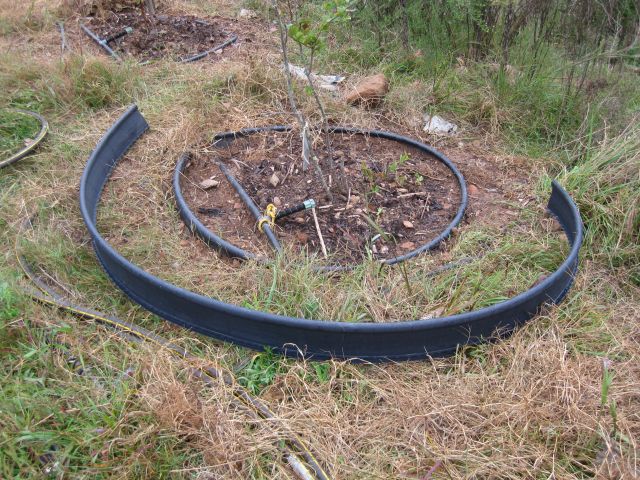
The diameter is about 3.2 ft (pi is 3.1 which is the ratio of a circumference to the diameter) which is sufficient for the time being. Have established the perimeter and dug out the Bermudagrass I will now have to defend against invaders sneaking under or over.
In chess often the best form of defense is attack. One Bermudagrass invested corridor runs between my 20 tomato cages and some young blueberry plantings. From this corridor the Bermudagrass invaded the tomato cages and the blueberries repeatedly this past season. Since we are now in September and temperatures are lower I decided that solarization using clear plastic may be ineffective. Instead I purchased commercial grade 6mm black plastic and, after removing the declining tomatoes and their cages, I covered the entire Bermudagrass area.
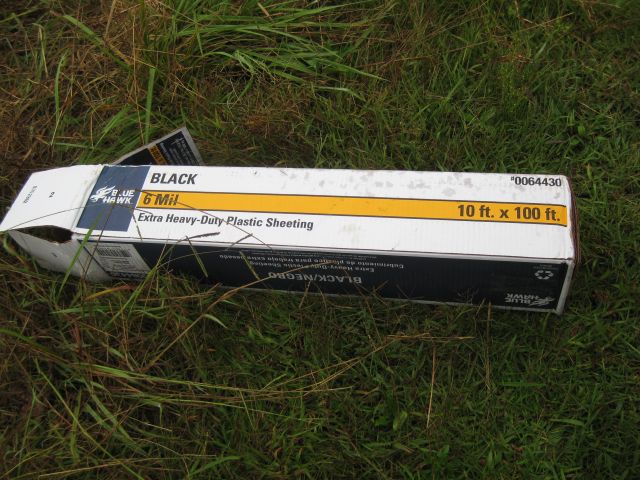
Hopefully, now the Bermudagrass is entirely deprived of light, it will weaken and maybe depart. To be monitored.
To secure the plastic in place I cut up some thick branches from a couple of my neighbor’s pine trees which collapsed over the fence into my field.
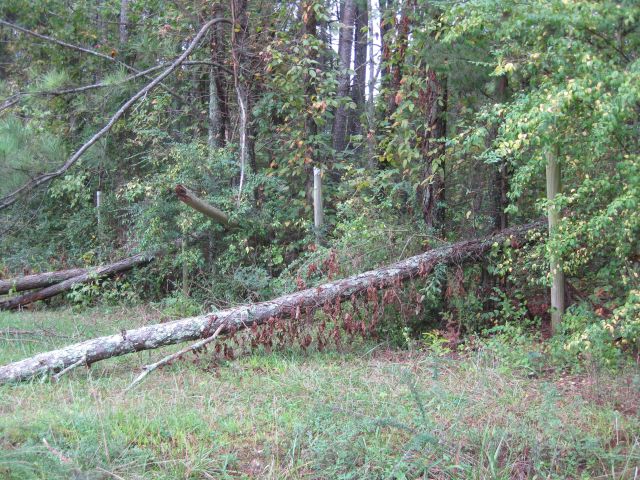
The wood is thoroughly rotted and when I am done with the black plastic, I will toss the wood into the contour ditches where it will continue to disintegrate and feed the fungi.
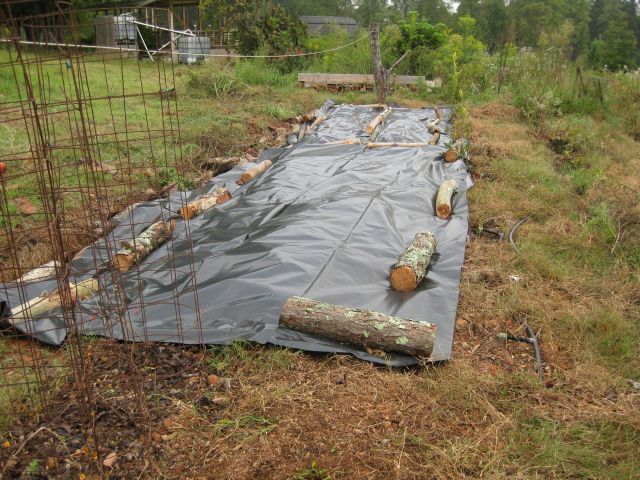
Neighborly gifts
Another of my neighbors has 12 acres of fields and woods. This spring he offered me some pecans which had grown from his large pecan trees and which had evaded his mower. We decided to wait until it was cooler. Today I gave him some green tomatoes from the recently leveled tomato planting and he suggested we tackle the pecans. He also has a huge black walnut which had several offspring in the vicinity. Although the ground was soft from the recent rains, the pecans and walnuts, individually less than 4ft, had sunk deep tap roots. I did my best to free them but in the end had to sever the tap roots. I took two pecans and one walnut and, for the time being, until their planting area is ready (a week or so), I have planted them alongside one of my figs. The ground is rich, catches the sun nicely and is close to my walk path so I can keep an eye on them and water them frequently. I removed about 60% of their branches and leaves and, to retain moisture and maybe add some nutrients, I covered the base with comfrey leaves.
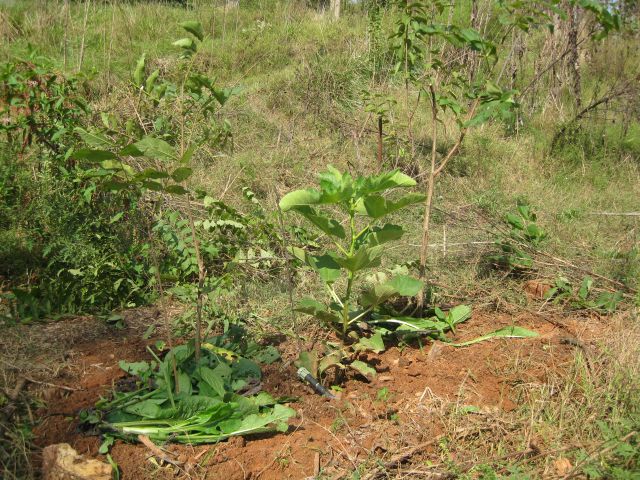
One of the pecans he had identified for me to remove was actually a coppicing – he had cut the 3 inch trunk close to the ground some time ago and new growth made it look like a young tree. I took a cutting of this new growth which I shall try start with other hardwood cuttings I shall be taking in the next few weeks.
Finally, the black walnut tree, which produced the sapling had large walnuts, and I took a few and will bury them and maybe get some seedlings.
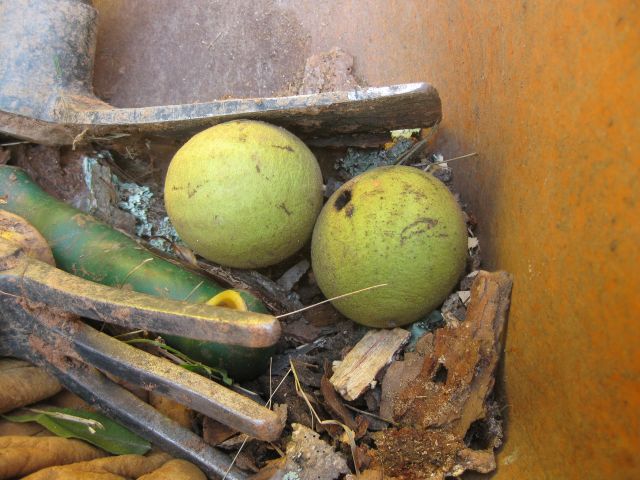

Hi
Regarding bermuda grass, I have a 50 x 20 foot area that I sheet mulched using Toby Hemenway’s lasagna method. It was about two feet deep and it seems to have killed the grass underneath, but I didn’t realize how invasive the stuff is and I just used fabric and river rocks at the edge. Runners went over the rock and invaded the bed. I am now digging out every little piece of grass/runners/etc. I can find. I’m considering using concrete blocks below ground with river rocks on top and next to this the edging you show above, then a row of daffodils that will hopefully fill in over time. AND vigilance about getting the runners.
I have also heard about 2 ft. trenches filled with gravel. Any thoughts? Wondering if this is more economical/environmentally friedly than concrete blocks.
I’m wondering what luck you’ve had with just the black edging (as the roots grow pretty deep).
Thanks for any thoughts you may have.